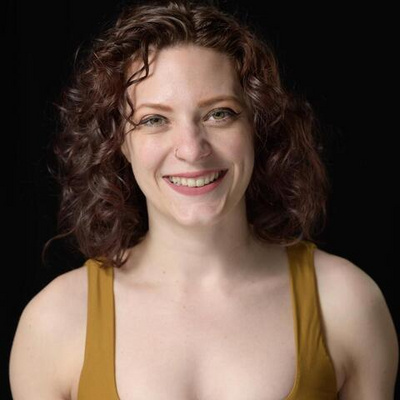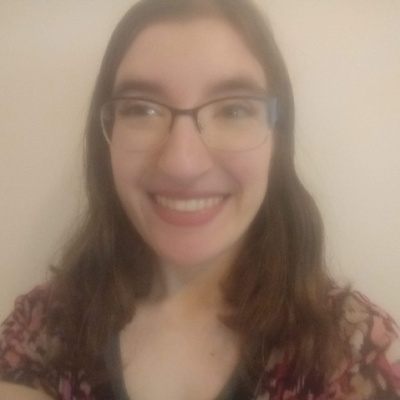It’s Not Just About the Tricks: Casting with Marceline Goldstein

Jumping from the trampoline to the production/casting circuit, Marceline Goldstein brings decades of experience to the table as part of The 7 Fingers’ casting team. Here she answers some of our most pressing casting questions, providing an inside look at the essentials of the process—for The 7 Fingers and beyond.
Marceline Goldstein’s acrobatic background began early on with her competing internationally in trampoline for several years on the Canadian National Trampoline Team, as well as performing in various festivals, corporate events, and shows since 1992.
After her performance career, Marceline joined Cirque du Soleil’s Acrobatic Casting Team as Senior Acrobatic Talent Scout for 10 years. She then transitioned into working with The 7 Fingers, contributing to the Broadway showPippin and numerous 7 Fingers shows such asTraces andPassengers as Tour Director.
Her latest work consists of Casting, Creating, and Collaborating for a variety of internationalevents and performances, such as the 2018 G7 Summit, the Monaco Music Festival, the 2019 UEFA Draw, and Carnival Cruise’s newest ship IONA. Marceline is currently working with The 7 Fingers as a Casting Associate alongside Louis Bourgaut and Louis Joyal.
We caught up with Marceline to learn more about her approach to casting and using some of the tools of the trade.
Melissa Mellon (MM): What is the very first thing that you do when you begin to cast for a show or a role?
Marceline Goldstein (MG): The first part of Casting is making sure you have all information to do proper research. This includes what the role entails (acrobatically, artistically, within the show and within the group of supporting castmates). Some information is straightforward such as dates and delays for casting, while others may be less clear (back up acts, specific tricks or the ability for the artist to be polyvalent for other needs on the show). Then there is knowing the artists you would like to put forward. This entails personality, adaptability, and their desire to do this kind of show, role, and timing, as well as making sure they have all essential information so that a good exchange can be had between us (Casting) and the artist.
MM: What is the most satisfying part of the casting process for you?
MG: The most satisfying part is when you get feedback from both the artist and the show that it is working really well. The artist has shown up feeling the contract matches expectations and the right attitude is put forward as well as work ethic. Then you feel that your vision for this individual in the role was on par with the needs, and when all are happy and fulfilled, shows and life go positively.
Showcase your talent!
Complete your profile page and add your act or show to the pool of performers being considered for hire via our talent database.
Signing up and creating your profile is FREE!
MM: What is the most difficult part of casting from a tools and technology point of view?
MG: A challenging aspect is that you must ensure you put forward the videos that show an accurate representation of the reality of the artist (not more, not less). It can also be challenging to regroup many different people and see all that is necessary due to a variety of time zones, internet quality, and just general availability/timelines for a casting call.
MM: Do you see any potential ways to make this aspect less of a pain point?
MG: I think most directors and casting associates all have a positive vision to have things go smoothly, so we are in a constant effort to make the challenges as smooth as possible. In this industry, we all talk and like to communicate and realize there are great impacts in selecting the right artist, so we do take the time it takes to make our best decisions. Patience and perspective are essential skills.
Looking for jobs, auditions, residency and grant opportunities?
CircusTalk PRO has got you covered!
Click here to access the CircusTalk Job Board!
MM: What is something that you wish artists knew about the casting process, and what can artists do to facilitate a casting director’s work?
MG: I would like artists to get to know the shows and companies they will be working for; to know that they can always reach out to discuss things, and we will always do our best to take time with them. I feel it important that they create demos that show a variety of skills, not only acrobatic but artistic as well, and showing their personality. Circus casting is really not just about tricks and skills, but the ability to work in a group, to have on-stage charisma and a movement quality that makes you watchable, so it is important to keep developing those skills as well.
LATEST FROM THE JOB BOARD
Looking for a strong male acrobatic base with a fantastic solo
 Want to stay up-to-date with CircusTalk and JamarGig? Keep up with our ever-expanding partnership by following each of us on our news sites and social media channels! Learn more.
Want to stay up-to-date with CircusTalk and JamarGig? Keep up with our ever-expanding partnership by following each of us on our news sites and social media channels! Learn more.
Editor's Note: At StageLync, an international platform for the performing arts, we celebrate the diversity of our writers' backgrounds. We recognize and support their choice to use either American or British English in their articles, respecting their individual preferences and origins. This policy allows us to embrace a wide range of linguistic expressions, enriching our content and reflecting the global nature of our community.
🎧 Join us on the StageLync Podcast for inspiring stories from the world of performing arts! Tune in to hear from the creative minds who bring magic to life, both onstage and behind the scenes. 🎙️ 👉 Listen now!

